Puffy, airy, and golden-delicious, this Dutch baby (AKA German pancake) is surprisingly simple to make (seriously!). The batter comes together in the blender in seconds and puffs up beautifully (and quite crazily) in the oven. Recipe includes a how-to video tutorial.
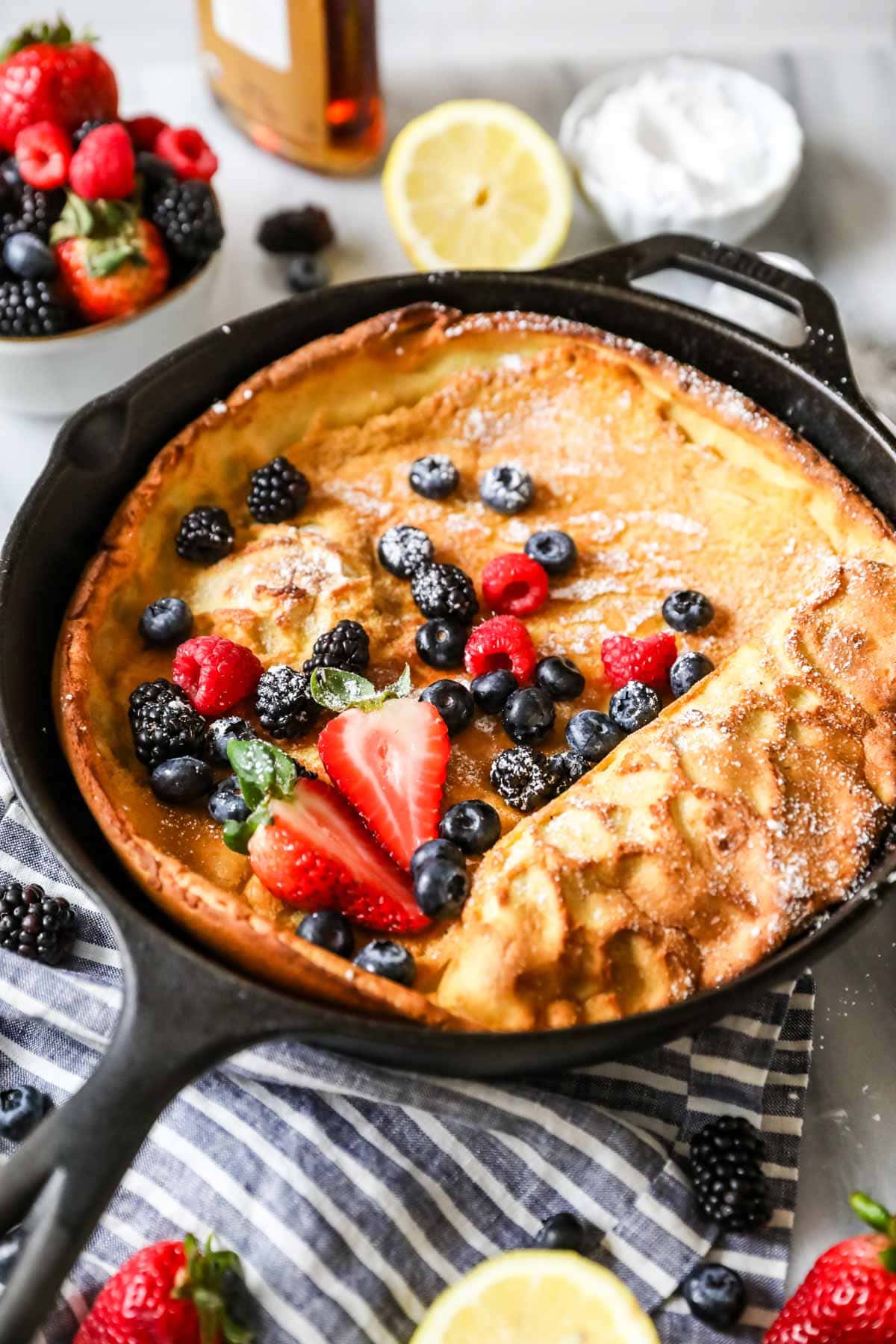
Classic Dutch Baby Recipe
Not to be confused with a newborn from the Netherlands, today’s Dutch baby is actually an incredibly tasty, giant German pancake! If you’ve never had one, it’s something of a cross between a popover, crepes, and pancakes (though it’s much lighter than a traditional pancake).
The beauty of this recipe is that it comes together in minutes in a blender, and the rest of the time is spent in the oven. You can use this time to prep your toppings (ideas below) or wash your blender. It’s quick and easy!
Why You’ll Love This Recipe
- Unlike regular pancakes, there’s no flipping or standing over the stove required today.
- No mixing bowls needed–the batter comes together entirely in a blender!
- Classic: the pancake puffs up nice and big in the oven before deflating as it cools. The golden brown exterior is simply so flavorful.
- Speaking of toppings, you can keep it simple with syrup and fresh fruit, or get a little fancy with some whipped cream, strawberry sauce, fried apples, or apple butter.
Ingredients
You need just 7 simple ingredients (plus whatever toppings you’d like):

- Flour. Just ½ cup of flour in this recipe, since our eggs will add body (and lift!) to the batter.
- Eggs. These give the interior a nearly custard-like feel and create steam, which creates the crazy structure. The eggs function here much as they do in choux pastry.
- Milk. I keep whole milk on hand, so that’s what I like to use here. Really any kind will work though; even non-dairy milks will work.
- Vanilla and sugar. These add a lovely but light flavor to our Dutch baby. If you plan to make a savory version, you can leave them out.
- Butter. Set this aside (don’t add it in the blender with the rest of the ingredients) and make sure it’s softened so it melts quickly when you add it to the hot pan. The fat of the butter helps create that subtly crisp, golden exterior.
- Toppings. We like maple syrup and macerated strawberries, but you could also just do a fruit sauce like my raspberry sauce or blueberry sauce!
SAM’S TIP: Do not add a leavening agent (like baking soda or baking powder)! This recipe gets its lift from steam created from the hot pan and the air we incorporate into the batter while blending. Trust me, we don’t need any extra help with leavening here!
This is just an overview of the ingredients I used and why. For the full recipe please scroll down to the bottom of the post.
How to Make a Dutch Baby

- Place your cast iron pan in the oven and let it preheat to temperature. Do make sure the oven is truly fully preheated (many ovens indicate they’ve reached temperature before they actually have, and you want your cast iron and your oven to be as true to temperature as possible for best results!).
- Blend all ingredients (except the butter!) for 10 seconds, then scrape the sides and blend again until everything is incorporated and smooth.
- Carefully remove your hot cast iron from the oven and add your butter. Your butter should immediately melt, sizzle, and start to brown. Swirl the pan to make sure the butter evenly coats the surface.
- Immediately pour your batter into the buttered pan and carefully place the hot pan back into the oven.
The Science Behind that Funky Rise: The high heat of the oven (and the intense heat of the cast iron pan) cause the batter to rise quickly. The eggs and other moisture in the batter turn to steam in this intense heat, which in turn gets trapped in the Dutch baby and adds to that dramatic puff. You’ll notice the edges puffing dramatically, sometimes creating a bowl-like shape and sometimes going a bit more rogue.

- Bake until golden and puffy, then carefully remove from the oven.
- Dust with powdered sugar (or cinnamon sugar) and top with fruit or syrup. Slice and serve while warm.
SAM’S TIP: Use a pizza cutter or kitchen shears for the easiest cutting!
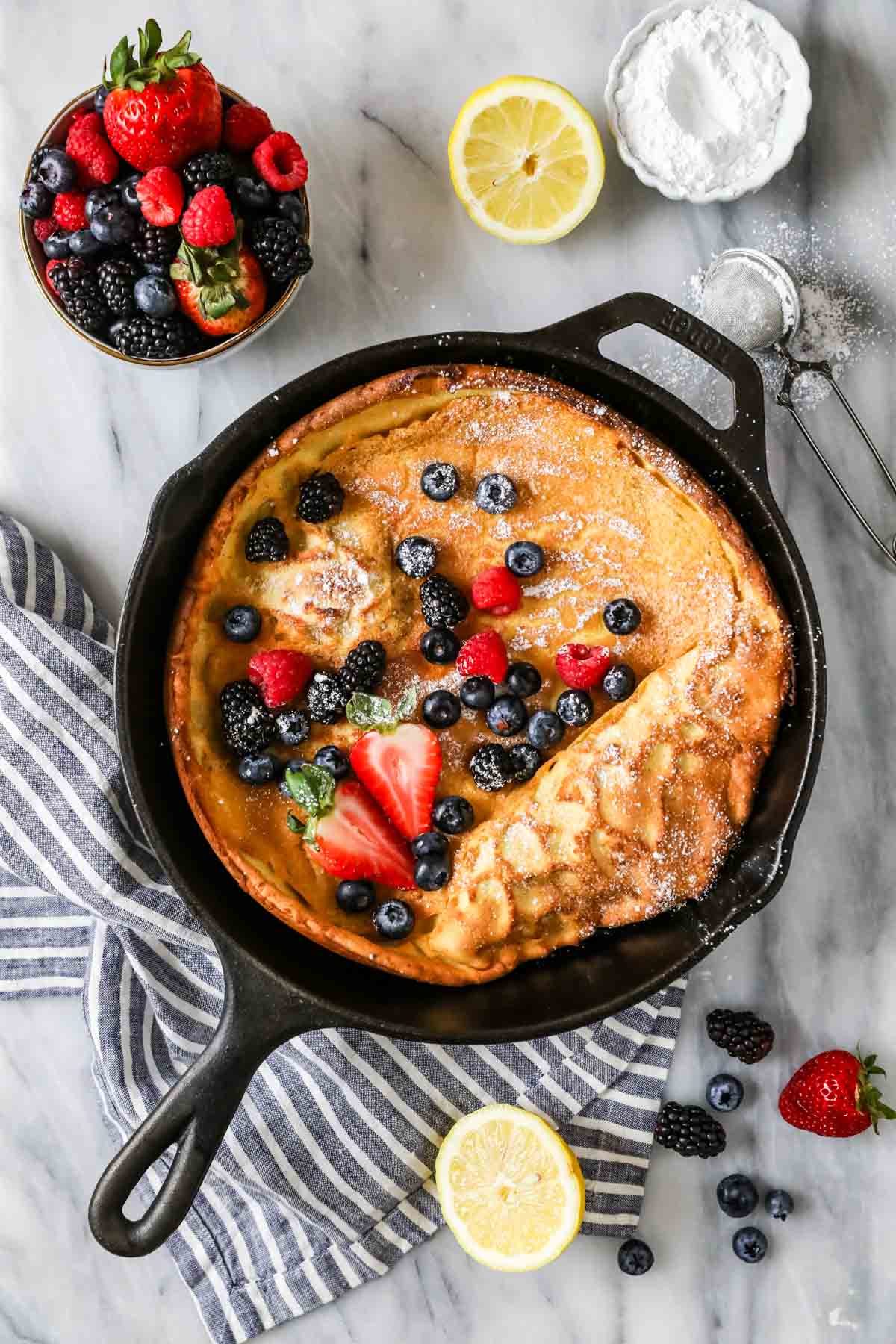
Frequently Asked Questions
A 10” cast iron is best for its even heat and is going to give you the best results, but most oven-safe containers (that are large enough) will work well here. An oven-safe stainless steel skillet would work, and in a pinch you could use oven-safe 9″ or 10″ metal cake pans. I recommend metal, if using something like ceramic or glass you’ll want to make sure you are adding room temperature and not cold butter to it, as a drastic temperature change could cause it to shatter. A decent cast iron pan is a great investment and I highly recommend getting one–I use mine for everything from turkey pot pie to pizookie!
You don’t, but I found that you get the best results when you use one (a food processor or immersion blender works, too!). The Dutch baby will rise better and have a better texture when you combine the batter this way.
There are several factors that can cause this, including improper mixing, using a pan that’s not cast iron, letting your pan cool down too much before adding your batter, or baking in an oven that hasn’t fully reached temperature.
Also, it’s important to note that it is completely normal for a Dutch baby to rise and then fall once it comes out of the oven! Just like with popovers, the crazy rise that you see comes from the steam, and as it cools the steam escapes and things start to deflate. Totally normal and still totally delicious!

Feeling fancy? Serve your Dutch baby with lemon curd and fresh blueberries or blueberry sauce!
Enjoy!
Let’s bake together! Subscribe to my newsletter to be notified of all the newest recipes, and find my free recipe tutorials on YouTube 💜
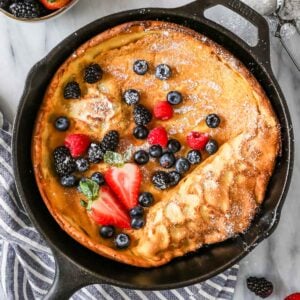
Dutch Baby
Ingredients
- ½ cup (118 ml) milk I prefer whole milk but any kind will work
- ½ cup (63 g) all-purpose flour
- 3 large eggs
- 2 Tablespoons (25 g) granulated sugar
- ½ teaspoon vanilla extract
- ½ teaspoon table salt
- 3 Tablespoons (42 g) unsalted butter (room temperature)
- Powdered sugar berries, maple syrup, or desired toppings for finishing
Recommended Equipment
Instructions
- Place skillet in the center rack of your oven, close the oven door, and preheat oven to 425F (220C).
- In a blender, combine milk, flour, eggs, sugar, vanilla extract and salt (do not add the butter here). Blend for 10 seconds, pause and scrape the sides of the blender with a spatula if all ingredients aren’t incorporated, and blend another 5-10 seconds longer. Set aside while oven fully preheats.½ cup (118 ml) milk, ½ cup (63 g) all-purpose flour, 3 large eggs, 2 Tablespoons (25 g) granulated sugar, ½ teaspoon vanilla extract, ½ teaspoon table salt
- Once oven reaches 425F (220C) (and make sure it truly reaches temperature, it’s ideal to have an oven thermometer in your oven or to let it run an extra 5 minutes or so after it tells you it’s preheated to ensure it’s hot enough), carefully use oven mitts to remove cast iron skillet from the oven. Immediately add butter to the skillet and swirl so it completely coats the bottom of the pan as it sizzles and melts (butter should begin to brown).3 Tablespoons (42 g) unsalted butter
- Immediately pour contents of blender evenly into skillet and, carefully, using oven mitts, return skillet to center rack of oven and bake for 20-23 minutes, until Dutch baby is puffed and golden brown all over.
- Serve warm. I’ll usually use a knife or pizza cutter to cut into wedges. We like ours with a sprinkling of powdered sugar. The Dutch baby will shrink as it cools, this is normal!Powdered sugar
Notes
Blender
I’ve found you get the best results with this recipe if you use a blender (or even a food processor), it allows the ingredients to incorporate properly. If you don’t have one you can vigorously whisk the ingredients together until combined.Storing
Dutch babies are best served warm and do not keep well, I recommend enjoying the same day they are prepared, while still warm.Nutrition
Nutritional information is based on third-party calculations and should be considered an estimate only. Actual nutritional content will vary based upon brands used, measuring methods, cooking method, portion sizes, and more.


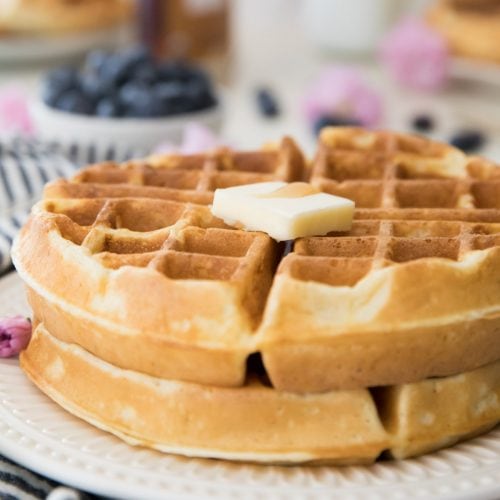
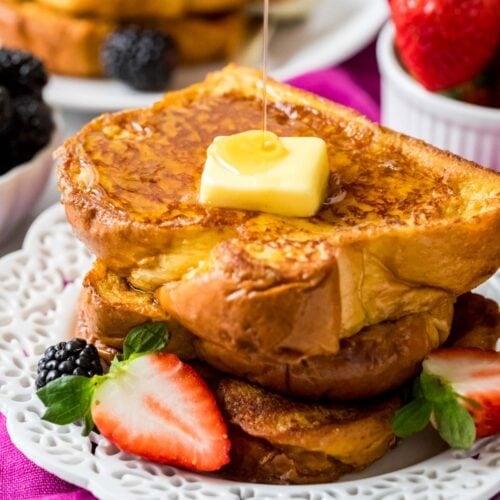
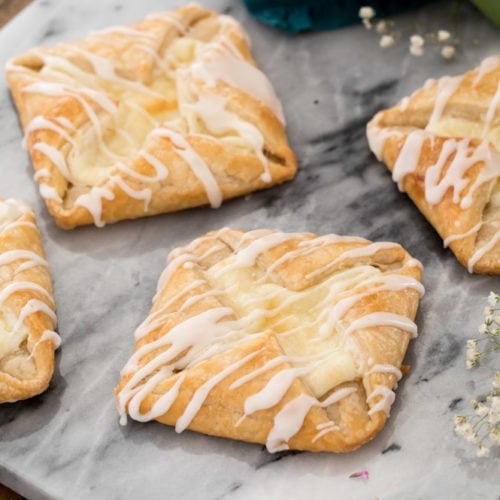
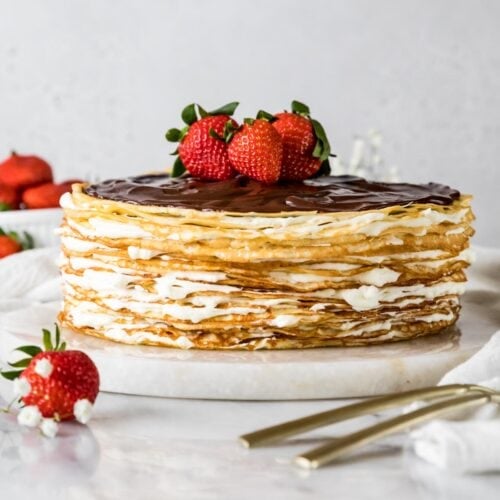
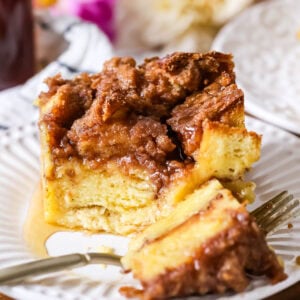
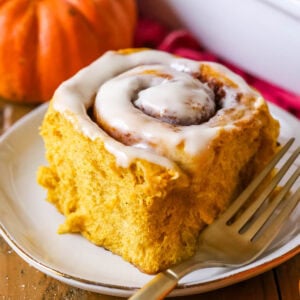
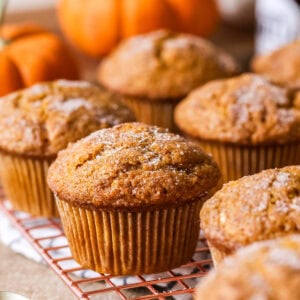
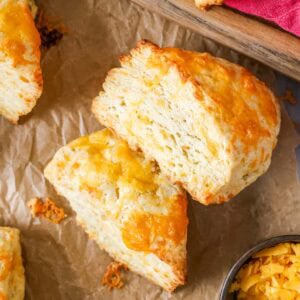
Burkuagh
Amazing! Tastes like a hybrid between pancakes and French toast with powdered sugar and syrup.
Sam
I’m so glad you enjoyed it so much! 🙂
Angela
Omg so easy to make. I used half the ingredients to make a small skillet. Pure perfection. Will add this to my rotation. You all are 2 for 2. (Biscuits were a hit). Let me see what I am gonna try next. 🩷
Sam
I’m so glad you enjoyed this and the biscuits so much, Angela! 🙂
Mary-Jo Gannon
I also have never had one of these before but I needed something to make and woke up and saw this recipe. Since I had all the ingredients on hand ( who doesn’t ?) and it seemed simple ( it was!) I figured I’d give it a go . Fantastic! This will be part of my meal rotation for sure. Thanks again for another winning recipe!!!
Emily @ Sugar Spun Run
Yay! We’re so happy you gave it a try, Mary-Jo 🥰
Simone
What a perfect recipe! Congratulations Sam!! I’ve just cooked it, and it’s marvelous!! Thank you so much for charing!! Kisses and hugs from Brazil 😀
Emily @ Sugar Spun Run
We’re so happy you loved it, Simone! Thanks so much for coming back to leave a review 🥰
Jeanette
I’d never heard of this so of course I had to make it right away! So so easy to make and absolutely delicious!
Sam
I’m so happy you enjoyed it so much, Jeanette! Thank you for commenting!
Mridula Joseph
Hi! Can you make this without a cast iron skillet? Like just bake it in a pan in the oven?
Sam
I really recommend a cast iron skillet but I do include some possible alternatives in the blog post 🙂